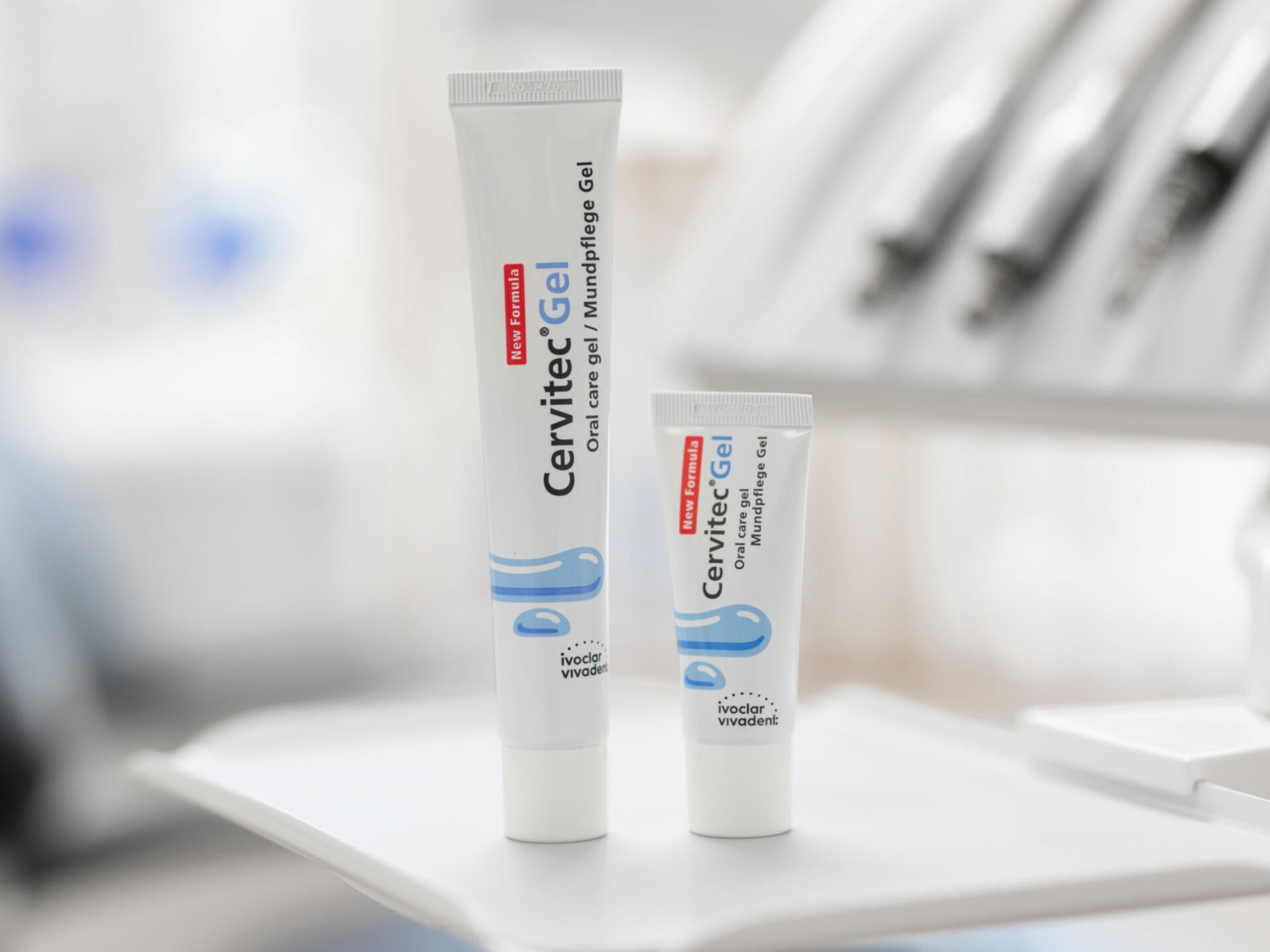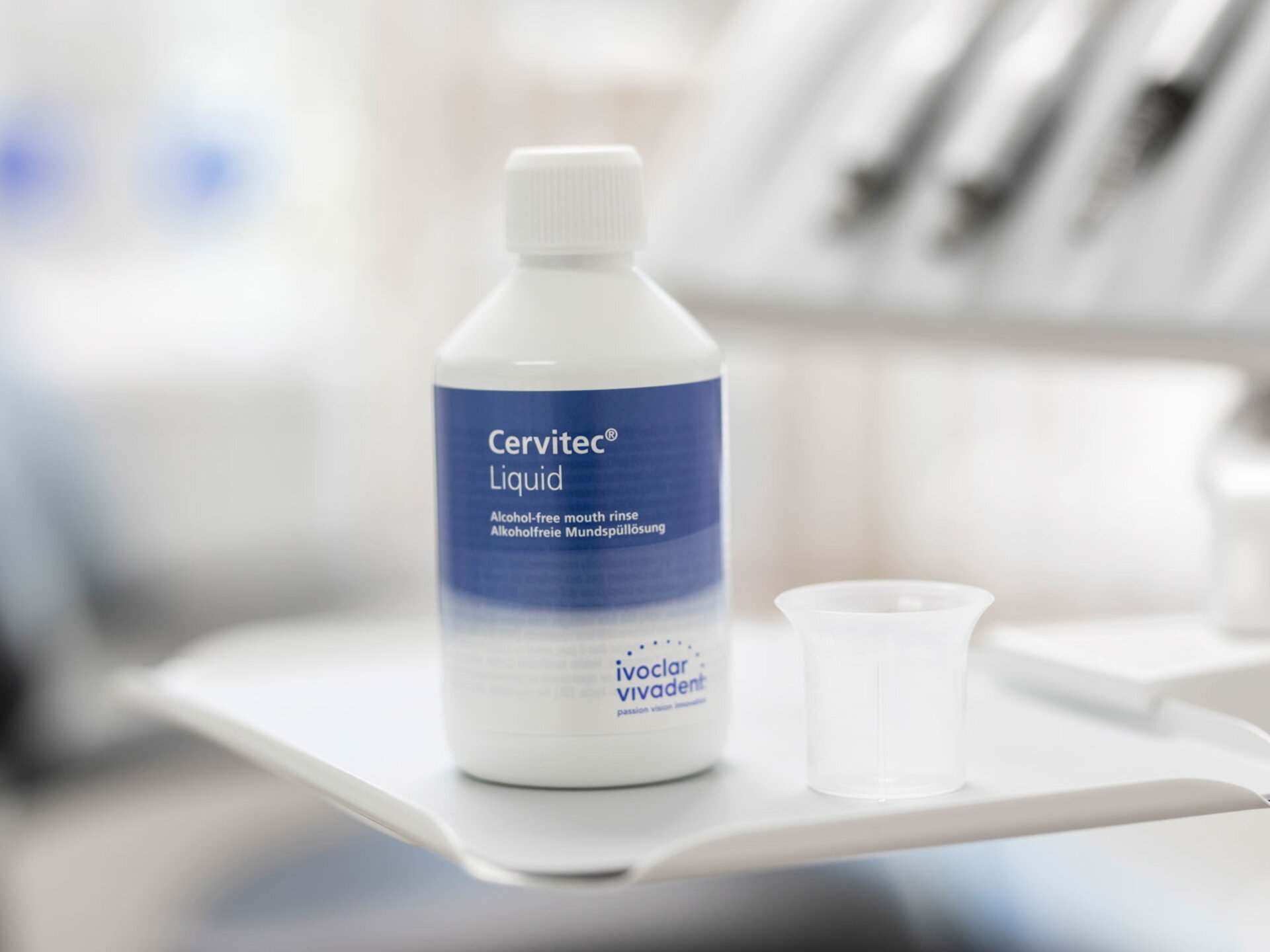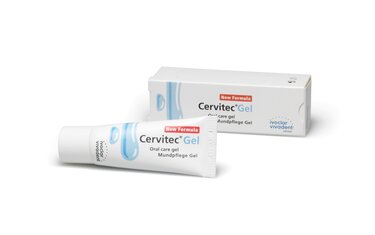For patients with an elevated bacteria count, routine oral hygiene, professional teeth cleaning and fluoridation alone are not enough. In order to protect teeth, gums, mucosa, implants, prostheses and restorations, the growth of the relevant germs must be controlled. The unique Cervitec products that contain chlorhexidine provide you with custom, coordinated solutions for germ control at home and in the dental practice.
Your benefits with Cervitec
- Helps to control the risk of caries and of gum infection
- Reduces the amount of damaging germs
- Inflammations subside
- Provides protection where oral hygiene is limited
- Clinically proven and recommended by dentists
- Tailored solutions in terms of concentration, administration and application
- Can be used in the dental practice and at home
- Available as a varnish, gel, and mouth rinse
-
Active substances such as fluoride, thymol, xylitol and the provitamin D-Panthenol for extra care and protection
- Varnishes that offer high moisture tolerance and optimum flow and wetting behaviour
- Gel with a smooth consistency
- Optimum coverage on complex surfaces
- Pleasant, mild taste
- Increased user motivation
- Varnishes and gel for children of all ages if the instructions for use are observed
- Liquid for children from 6 years of age where recommended by a dentist
Find the right Cervitec product
-
0.2 percent chlorhexidine, xylitol, the provitamin D-Panthenol, 900 ppm fluoride
-
D-Panthenol and xylitol moisten and care for the mucosa and gums
-
Xylitol ensures a pleasant taste and supports the effect of chlorhexidine
-
For use in the dental practice and at home
-
Contributes to the longevity of fixed and removable dentures
-
Breath is fresher
-
Precise application and exact dosage thanks to the delicate tip of the tube
-
As the formation of foam is minimal, it is pleasant to keep in the mouth and allow to work
-
For the protection and care of gums, oral soft tissue, peri-implant tissue, mucosa, teeth and remaining healthy tooth structure
-
For prevention of infection of the gums, mucosa and peri-implant tissue
-
For prevention of caries
-
For the care of inflammatory conditions such as gingivitis, mucositis, denture stomatitis, periodontitis and peri-implantitis
-
To promote the healing of wounds surrounding the tooth and gums
-
In the case of elevated bacteria counts
-
Ready-to-use mouth rinse with 0.1 percent chlorhexidine, xylitol, provitamin D-Panthenol
-
Alcohol-free
-
Provitamin D-Panthenol and xylitol moisten and care for the mucosa and gums
-
Xylitol ensures a pleasant taste and supports the effect of chlorhexidine
-
For use in the dental practice and at home
-
Gentle on irritated gums, peri-implant tissue and mucosa
-
Caring components and a mild mint taste leave a pleasant feeling in the mouth
-
Breath is fresher
- For short-term use in intensive mouth rinsing regimens
- To maintain healthy gums, mucosa and periodontium
- For oral hygiene before and after implant-related, periodontal, dental, or orthodontic procedures
- Where the risk of caries is high
- Where capacity for oral hygiene is limited
- In the case of bad breath (halitosis)
Product comparison
Get this product in our online shop
The range of available products may vary from country to country.
[1] Flamee S et al., Eur. Arch. Paediatr. Dent. 2015, 16, p. 449-454.
[2] Baygin O et al., Med. Oral Patol. Oral Cir. Bucal 2013, 18, e362-370.
[3] Drebenstedt S et al., Operative Dentistry 2012, 37, p. 161-171.
[4] Weigand C et al., J. Dent. Res., 2007, 86 Spec Issue B, Abstract #0154.



